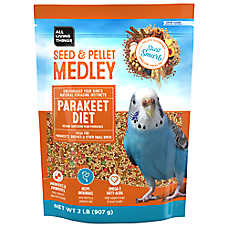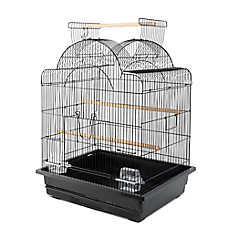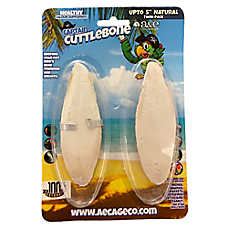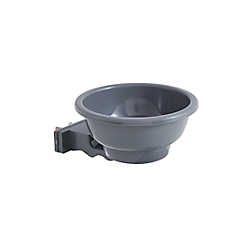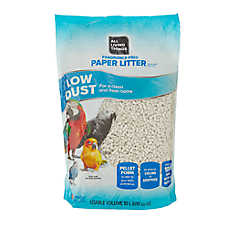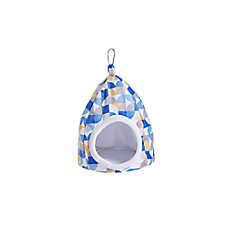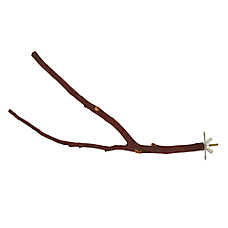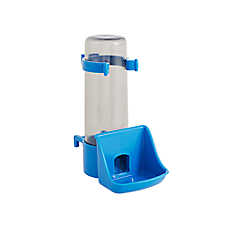Canary Wing Parakeet Care Guide
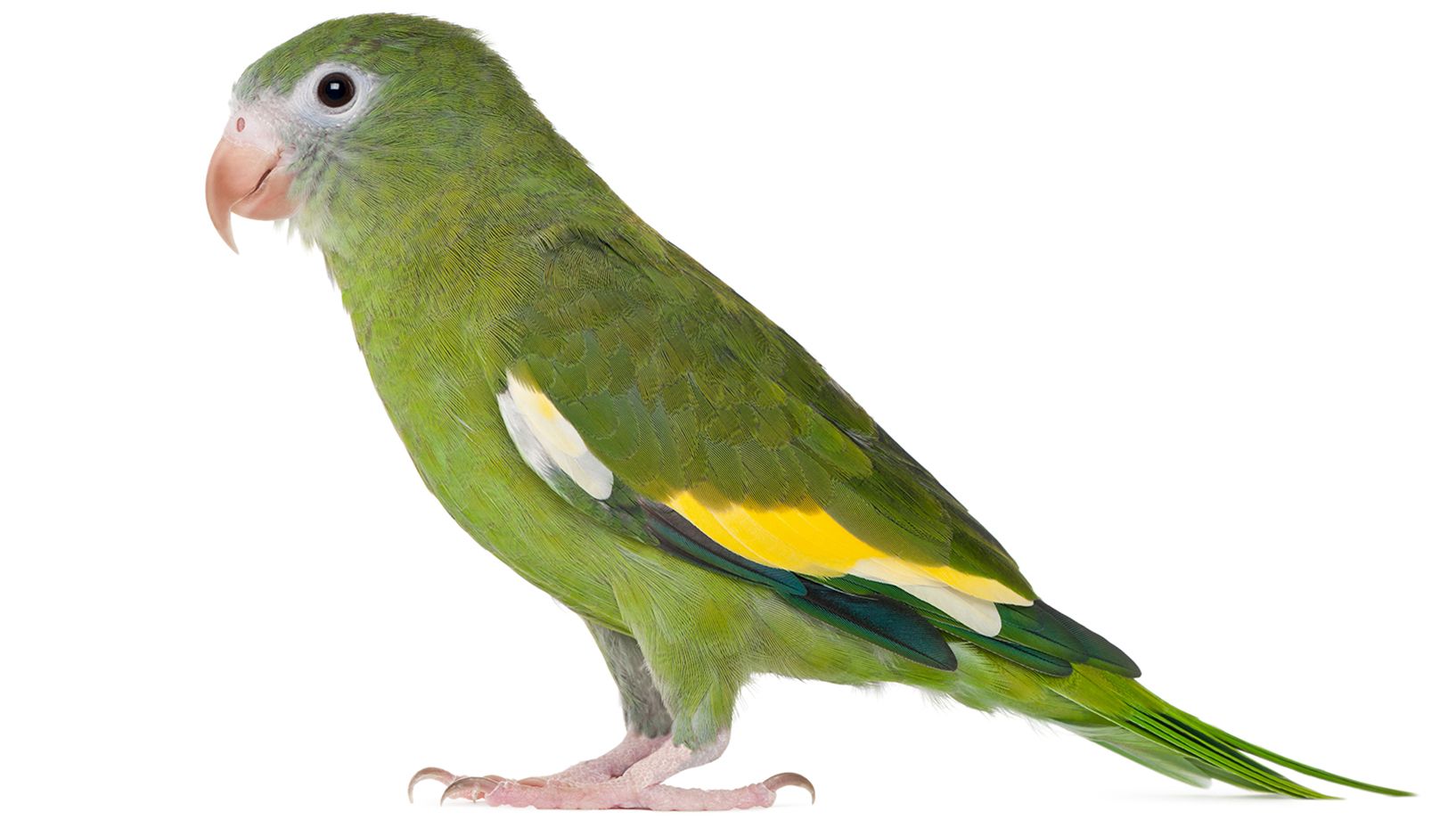
In this Article
Canary-Wing Parakeets, aka Busy Little Bee-Bees!
Canary-winged parakeets, also known as white-winged parakeets and “bee bee” parakeets, are small birds that are native to South America. These birds are technically small members of the parrot family and are sometimes referred to as “pocket parrots.” The “Bee bee” nickname comes from their small size combined with their quick, darting flight pattern that is reminiscent of bees buzzing around. Canary-winged parakeets are typically olive green with white patches on the wings, and are touted as having friendly, outgoing personalities!
Size: about 8.5" (22cm) from head to end of tail.
Lifespan: Canary-Wing Bee Bees have been known to live 15-20yrs with proper care.
Behavior: Canary-winged bee bees have a gentle temperament and an engaging personality. They're affectionate, intelligent, playful and bold.
Temperament: Known to be social and affectionate, Canary-Wing Bee Bees make great companions. In the wild they can live in flocks of up to 100 birds and do well living with other Beebees of the same sex. They are often known to enjoy physical contact with their humans too and like to perch on shoulders or play in peoples’ hair
Setting up your habitat!
Canary-winged parakeets need a clean, enriching, and safe environment with space to stretch, climb, and play.
Enclosure size and placement
- Minimum size: 20” x 20” x 30”
- Recommended size: 27”x 24”x 30” or larger
- When it comes to bird cage sizes, larger is typically better, especially for multiple birds
- Keep the cage at or below eye level, away from:
- Kitchens and cooking fumes (especially non-stick cookware)
- Strong odors and smoke
- Drafts, windows, and direct sunlight
Cover the enclosure at night to help your bird feel secure.
Enrichment and accessories
- Provide at least three toys to encourage exercise and mental stimulation
- Rotate toys regularly to keep your bird engaged
- Include puzzles, chewables, and foraging items
- Place a cuttlebone in the enclosure to support beak and bone health
- Add a T-stand or playpen so your bird can safely play outside the cage (indoors only)
- Include multiple perches of varying thickness and height for healthy foot movement
- Add a ladder perch for extra climbing opportunities.
- Avoid placing perches directly above food or water bowls to prevent contamination
- Use a liner at the bottom of the enclosure and replace as needed to maintain cleanliness. Cage should be spot cleaned daily, and fully cleaned weekly.
Bathing and water
- Offer a birdbath or shallow dish for splashing and bathing 2-3 times a week.
- Alternatively, if your bird prefers showers to baths , gently mist your bird with warm water 2–3 times a week
- Add a second water dish if desired—many BeeBees love to bathe, and it can get a little messy!
- Provide clean, fresh water for drinking in a bowl or bird water bottle at all times
Care and Feeding
Pellet-seed blend: This is your bird’s primary source of food and nutrition. Remove old food and refill with fresh food daily. Keep the bowl about ¾ full so your bird can eat when they’re hungry
Fresh veggies and fruit: Offer your bird leafy green vegetables, fruits and grains every other day to help provide a well-rounded and interesting diet to keep your bird healthy.
Treats: Honey sticks and millet spray may be offered as treats. Offer treats once or twice a month in limited quantity to help prevent obesity
Water: Provide clean, fresh water for your bird at all times either in a water bowl or via a bird water bottle.
Never feed your bird chocolate, sugar, fried foods, avocado, or human junk food. These foods can make your bird very sick.
[When to see a vet]
In addition to regularly scheduled appointments, contact your avian veterinarian if you notice the following signs:
- long periods sitting at the bottom of the enclosure
- decreased appetite or weight loss
- less activity and grooming
- feathers fluffed for long periods of time
- sneezing; discharge from eyes, nose or mouth
- runny droppings for more than two days
- constantly plucking feathers or feathers are falling out
- beak over gown/ not closing normally
Go to “find a vet” on AAV.org for help finding an avian veterinarian in your area.
SHOPPING CHECKLIST
- Cage habitat
- Minimum size 20”x 20” x 30"
- Recommended size 27”x 24”x 30” or larger
- fortified parakeet pellet diet
- seeds, fruits and veggies can be used in addition for treats or enrichment to chew on
- food bowls
- water bottle and/or bowl
- at least two perches (each a different thickness and height)
- A misting spray bottle and/or bird bath (for bathing)
- Ladder perch (additional to 2 other perches)
- toys
- habitat liner
- habitat cover (for nighttime)
- cuttlebone
Ready to learn more? This guide is a great starting place, but we encourage you to do more research on the individual species that you are keeping so that you can be as successful as possible!
FAQs
Can Canary-Wing parakeets talk?
Some can learn to mimic words or sounds, but they’re not as vocal as larger parrots. Most BeeBees prefer chirping and whistling over talking.
Some can learn to mimic words or sounds, but they’re not as vocal as larger parrots. Most BeeBees prefer chirping and whistling over talking.
Should I keep more than one BeeBee parakeet?
They’re social birds and often enjoy a companion. If you plan to keep more than one, choose birds of the same sex to avoid breeding and increase enclosure size to give them enough space.
They’re social birds and often enjoy a companion. If you plan to keep more than one, choose birds of the same sex to avoid breeding and increase enclosure size to give them enough space.
Do BeeBee parakeets need to be let out of their cage?
Yes. Supervised out-of-cage time helps with exercise, bonding, and mental stimulation. Always supervise your bird and keep them indoors during free-flight or playtime.
Yes. Supervised out-of-cage time helps with exercise, bonding, and mental stimulation. Always supervise your bird and keep them indoors during free-flight or playtime.
How often should I clean the enclosure?
Replace the habitat liner as needed—daily if soiled. Clean food and water dishes every day. Deep-clean the cage, perches, and toys weekly.
Replace the habitat liner as needed—daily if soiled. Clean food and water dishes every day. Deep-clean the cage, perches, and toys weekly.
Can I give my parakeet fruit every day?
Fruits are great for variety but should only be offered every other day and in small amounts. Too much fruit can cause digestive issues.
Fruits are great for variety but should only be offered every other day and in small amounts. Too much fruit can cause digestive issues.
